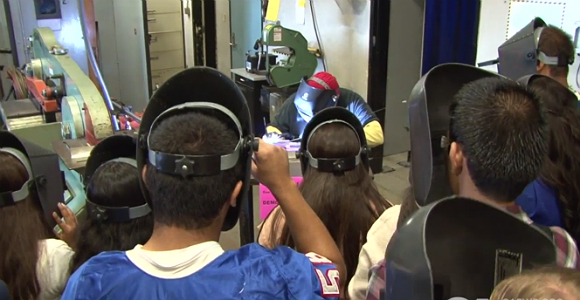
In the past several months, California has taken two big steps to strengthen its skilled workforce. This is good news because, according to the Public Policy Institute of California, the state is facing a major skills gap in the labor market over the next decade.
First, the legislature included $50 million in the 2014-2015 state budget for career technical education (CTE) and a $250-million fund for the Career Pathways Trust, a work-based learning grant program. Both budget items were advocated for by the California Economic Summit.
Second, the legislature passed and Governor Jerry Brown signed AB2148, a bill that requires the California Workforce Investment Board (CWIB) to work with the Governor to gather data from all the agencies involved in CTE and workforce investment to better track students’ progress in their education and then in the labor market. Currently, the information already exists, but it is scattered amongst all the agencies involved and not easily accessible – one must gather the data from each agency separately and analyze it on his/her own.
Sponsored by Assemblymember Kevin Mullin (D-South San Francisco), AB2148 aims to make sure that California’s investment in CTE is effective and transparent. “We’re trying to create a place where stakeholders can see what’s going on in terms of workforce investment in the State of California,” said Mullin.
And, when he refers to “stakeholders,” he is not only referring to those involved in CTE, but all Californians, who, as taxpayers, are “stakeholders.” Reports generated as a result of AB2148 will be available at CWIB to the public, which makes the investments accountable to all those interested.
The bill was supported by the members of the Workforce Action Team of the California Economic Summit. And, with the aforementioned increases in the 2014-2015 State budget for CTE and workforce training, tracking the effectiveness of these programs will be important to guide future investments.
What many hope to get out of AB2148 is a better understanding of how effective the investments are in CTE. Added Mullin, “We will be able to see the level of income generated and the industries we’re training Californians to enter, as well as how these things change over time.” Basically, it would provide the Governor, Legislature, educators and other policymakers with correct data to assist them in making informed investment and policy decisions.
Rita Cepeda, chancellor of the San Jose/Evergreen Community College District, said this bill will also help show what needs to be changed within the system. “Sometimes, interestingly enough, [workforce training programs] may contradict or run counter to another area. So the ability to force a concerted, collaborative look at these various initiatives, in and of itself, will be very helpful and it may in fact begin to address issues of maximization of resources, duplication of efforts and, in some instances, policies that sometimes unwittingly contradict one another.”
As California continues to invest in CTE and workforce training programs, it will be beneficial for its stakeholders to see what is working well and where future investments and policies should be guided. It will also be beneficial to those entering the skilled labor market to determine which educational paths will lead them toward economic security.

